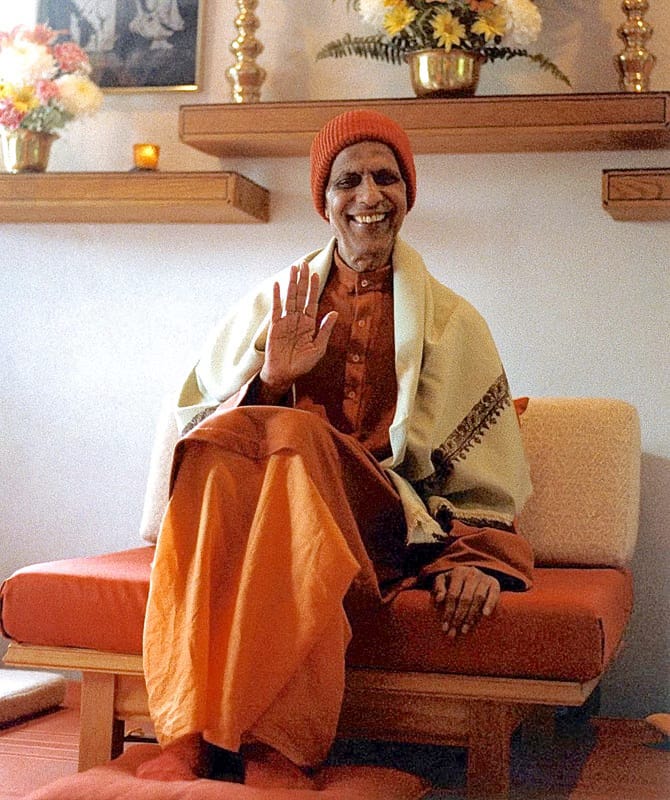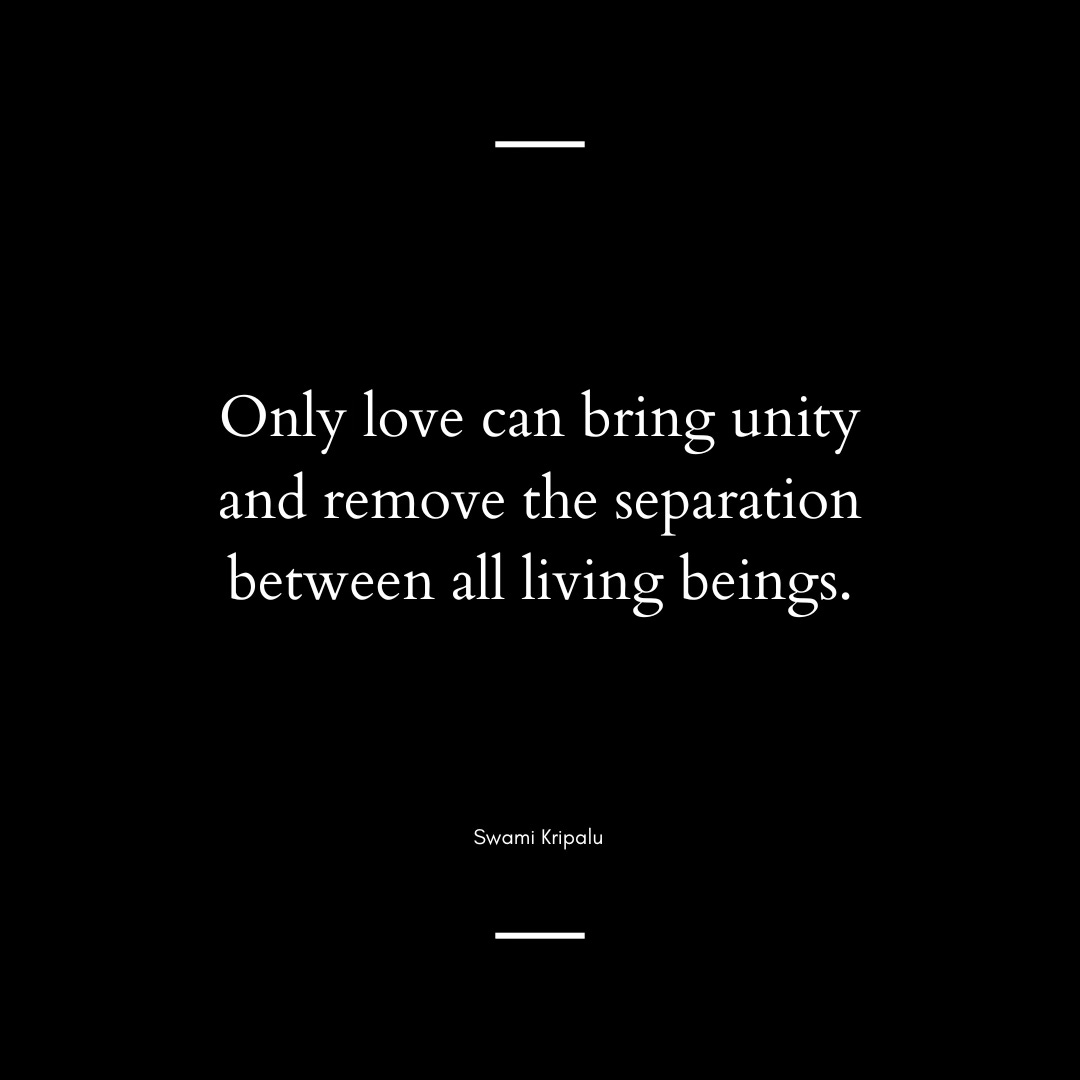Where does yoga come from?
The Heart of Yoga: Exploring the Roots of Pranakriya Yoga & the Legacy of Swami Kripalu
The yoga I practice and teach is inspired in large part by the Pranakriya School of Yoga Healing Arts. Pranakriya teachers provide transformative yoga instruction for the modern Western practitioner that are rooted in Tantric Hatha traditions taught by Swami Kripalu. Classes incorporate meditation, philosophy, pranayama (breathwork), and postures (asana) that are true to the heart of yoga.
The teachings of Swami Kripalu were the inspiration behind Kripalu Yoga© as developed by Yogi Amrit Desai and taught at Kripalu Center for Yoga and Health in Lenox, Massachusetts, the largest yoga retreat center in North America that has trained thousands of teachers from around the world.
The teachings of Swami Kripalu are also the inspiration behind Pranakriya Yoga. Pranakriya Yoga was developed by Yoganand Michael Carroll, a long time student of Amrit Desai, Swami Kripalu, and other teachers in the tradition. During his 15 years as a resident of the ashram, Yoganand dove deeply into renunciate practices. While drawing heavily from Kripalu principles, Pranakriya is distinct as it places a greater emphasis on pranayama techniques and integrating deeper Tantric and Hatha Yoga concepts.
Swami Kripalu was an ascetic yogi and kundalini yoga master whose intensive practices led him to a very deep understanding of yoga. He called himself "a pilgrim on the path of love" and is revered in India as one of the greatest saints. He meditated 10 hours a day for 30 years and spent a decade in near complete silence and seclusion.
Nothing could have prepared me for my first encounter with Swami Kripalu. When he walked into the room, my mind was catapulted into a state of focused awareness deeper than anything I'd ever experienced.
Swami Kripalu was a lightning bolt wrapped in an orange robe.
-Richard Faulds, author of Kripalu Yoga: A Guide to Practice On and Off the Mat
Swami Kripalu had an extraordinary stay in the United States from 1977-1981, where he broke his silence of many years in order to spread yoga and spiritual teachings in America. He was instrumental in reviving an ancient form of the practice that he called yoga sahaja1, or natural yoga, which is also known by other names including kundalini yoga2 and "surrender yoga." Swami Kripalu believed that natural yoga is the source of all other yogas and should be accorded the highest place.
Swami Kripalu embraced both spirituality and science, approaching his study of yoga with a methodical, almost scientific rigor. (I am slowly working my way through his legendary 800+ page Asana and Mudra textbook!) Drawing from his own experiences, the teachings of his guru, scripture, Ayurveda, and modern sciences, he played an important role in bridging the wisdom of the East with innovations emerging in the West.
He also had many talents and interests aside from yoga. He was an accomplished musician and composer, playwright, poet, storyteller, and writer.
One of my favorite parts of being a teacher is sharing about yoga’s ancient origins and helping students realize that it can emerge from within them too. This I like to call the real, inborn A.I. (Ancient Intelligence)3. This post is coming on the heels of the 2025 Consumer Electronics Show in Las Vegas, where we get a first-look at the cutting edge technology that’s emerging from around the world, many of them now tout integrated-A.I. (Artificial Intelligence) features. My favorites include a device to help people with visual impairments navigate the world independently, a robot vacuum with a claw-like arm that can clear its own path, and an electric cooler powered by a solar umbrella!
Perhaps we’re at a time in our evolution where Ancient Intelligence meets Artificial Intelligence. Maybe this is where the big problems can get solved because really, how much longer can we survive if they keep getting worse? Albert Einstein said “No problem can be solved from the same level of consciousness that created it” and I think we’re well overdue for an upgrade of consciousness. I imagine that postures and breathwork of yoga are a way of preparing the ‘hardware’ of our bodies for the next ‘operating system’ to be installed and flow with ease.
Yoga is a technology for arriving in this present moment. It is a means of waking up from our spiritual amnesia, so that we can remember all that we already know. It is a way of remembering our true nature.
-Donna Farhi
I experience most of life as yoga now, even crying. There is much value in tradition, learning fundamentals of alignment, breath techniques, and so on, but I believe the yoga that is waiting inside you is the real special sauce. It is uniquely yours, a culmination of all your life experiences (and even past lives, if that is part of your belief system) and desires, all rolled up in the grand mystery of life. Perhaps there is a great healing potential buried there, or it’s simply a journey of self discovery…one that can leave you feeling more fully alive. Who wouldn’t want that?
In my last post I shared a personal story of “surrender” and it also calls to mind a story about Swami Kripalu that deeply moves me, and I refer back to it often. Head over to Instagram to hear that and see some ways you can explore matsyasana (fish pose) in your own practice!
Swami Kripalu used yoga sahaja as a general term, referring to the Sanskrit word sahaja which means “spontaneous” or “natural.” Unlike structured devotional practices, yoga sahaja emphasizes spontaneity and authenticity. Devotion in this context isn’t tied to rituals or specific deities but arises naturally from the heart. Be aware that this term was co-opted in the formation of Nirmala Srivastava’s Sahaja Yoga religion that is characterized by some as a cult.
It is important to distinguish Swami Kripalu’s kundalini yoga practice described above from that of the kundalini brand popularized in the West through the teachings (and abuses) of Yogi Bhajan. While the name is shared, the Sanskrit term kundalini refers to the universal energy that is said to lie at the base of the spine in the subtle body. Through the practice of yoga, one is said to awaken this life force energy (also known in other traditions as chi or Holy Spirit, for example) and transform their body, mind, and spirit. So in essence, all yoga is "kundalini yoga" and is not "owned" by one specific person or lineage. Beware of charlatans! One does not need to be a renunciate or initiate in any tradition to experience a kundalini awakening. It is your birthright to discover this sacred energy and feel more fully alive!
Yoga is a universal practice that belongs to everyone, but bits and pieces of it have been packaged and sold as yoga “brands” like Bikram, Iyengar, etc. This is similar to what happens in the fitness industry with ‘tribes’ like CrossFit and Peloton packaging certain forms of exercise as uniquely theirs. It doesn’t make it bad or wrong, but it can be misleading to consumers who lack awareness of the full landscape. And of course, people on a spiritual path can be vulnerable and “guru scandals” are unfortunately too common, even impacting the Kripalu Center in 1994.
On yoga and kundalini, Swami Kripalu says: “In India, yoga is simply called yoga, free of any adjective, because everyone knows the word encompasses all the branches of yoga: Bhakti yoga, jnana yoga, karma yoga, raja yoga, laya yoga, mantra yoga, and yoga. All of these branches are simply called yoga. And yet kundalini yoga is the root of them all, because everything that happens in kundalini yoga comes to the yogi automatically, free of the sadhaka’s own will, driven by the kundalini power. The yogi feels that whatever happens in sadhana comes from God: all the sounds, all the mantras, all the postures, all the mudras, all the pranayamas, all the various ways to meditate, and so forth. All of these are kundalini driven experiences and they become the various types of yoga.”








